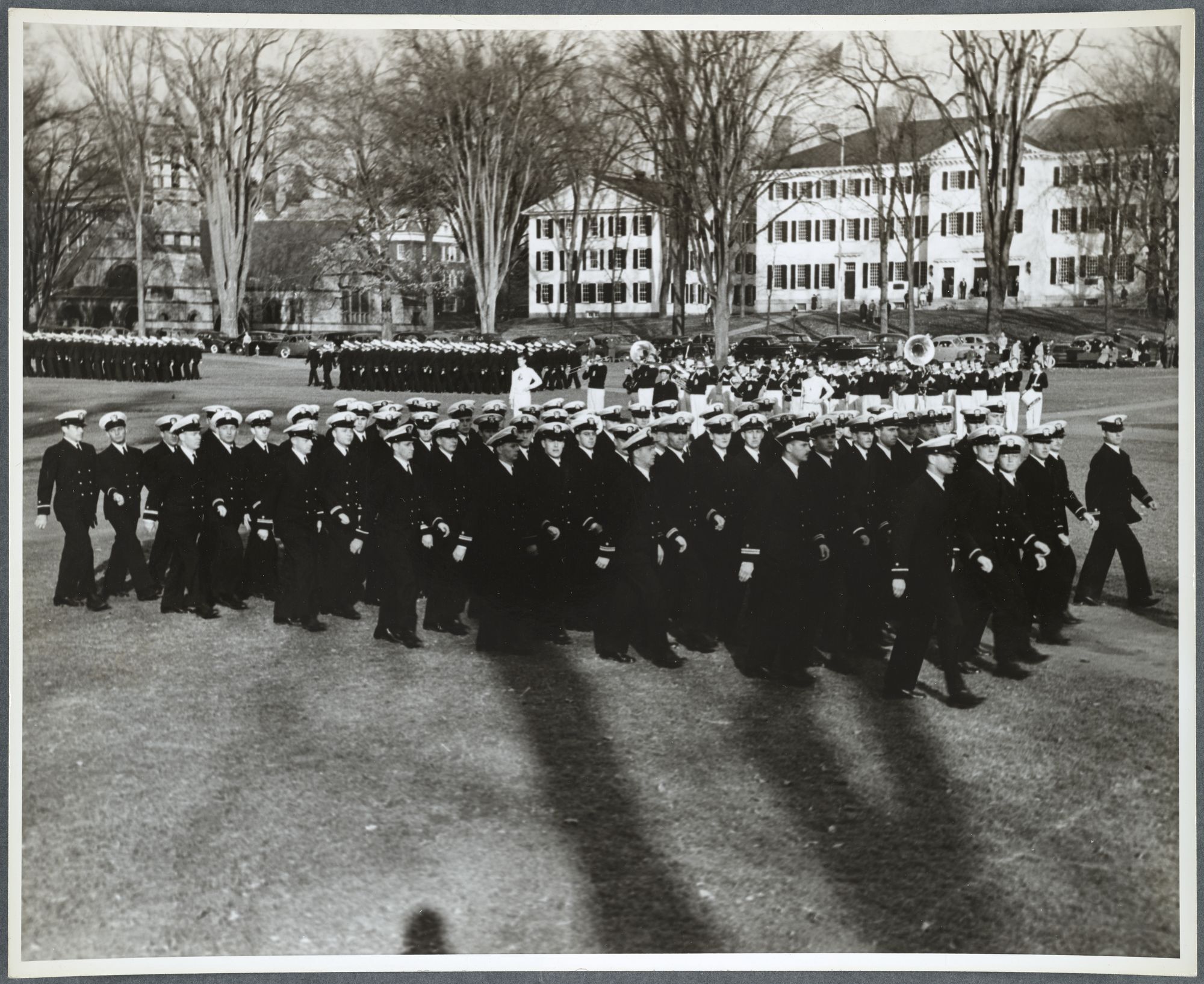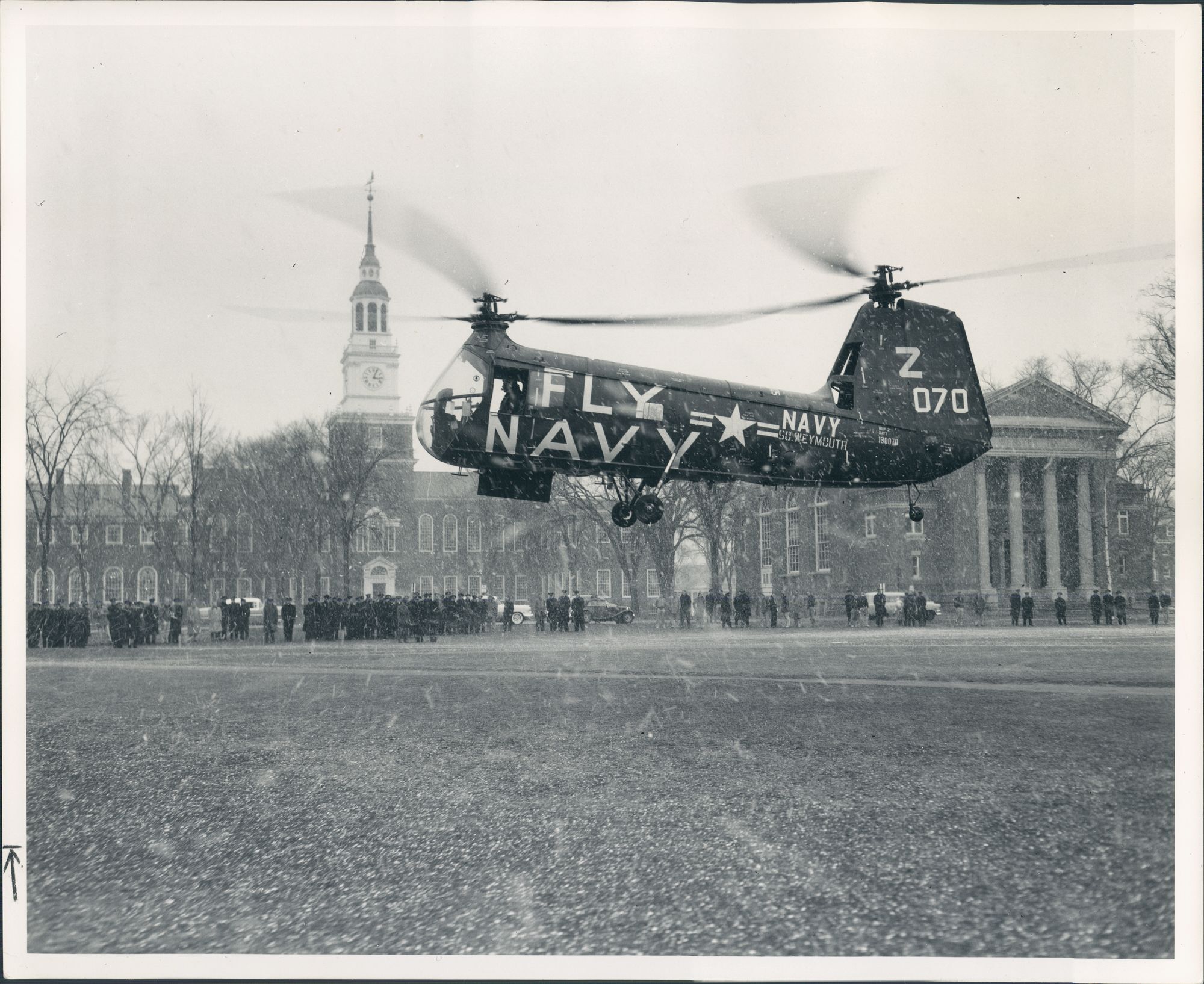Dartmouth and the U.S. Military
ROTC Precursor
In the decades leading up to Vietnam, Dartmouth played host to 2,000 participants of the V-12 program, the most out of the 130 universities that participated. V-12 was developed by the U.S. Navy as a way to supplement their force of commissioned officers during World War II by combining education and military service. These candidates would take four semesters of classes before undergoing further training at a U.S. Naval Reserve Midshipmen's School where they had to undergo four months of further training before entering active duty.
For a period of time during the war, the V-12 program comprised nearly the entirety of Dartmouth's student body. This happened at colleges all across the country, as they all were in danger of shutting down and were desperate for warm bodies and funding of any sort.
V-12 and Dartmouth class of '46 graduate Harold Frank recalled
ROTC at Dartmouth
In the early 1900s, the United States Military leaders realized that the country needed more trained officers than military academies were able to produce. To fill this need, the 1916 ROTC bill was passed, creating training programs at colleges across the country designed to develop students into officers in the Active Army, Army Reserve, and National Guard. Navy ROTC came to Dartmouth’s campus in 1946, and shortly after Army and Air Force ROTC programs were established in 1951.
Participation
From its inception, ROTC was very popular amongst the student body. In fact, almost a third of each class, roughly 200 students, graduated from ROTC every year. By the end of the Vietnam War in 1972, more than 1,800 students had trained by the program.
For most students joining ROTC had nothing to do with patriotism or with their political convictions, as it was just a natural extension of the draft. Many Dartmouth students saw ROTC as a superior alternative to the draft, so they elected to join ROTC in order to pick their branch and ensure that they would enter the military as an officer. Additionally, ROTC courses counted for credit and were fully integrated into Dartmouth's curriculum. The military trainers were even given professor status.
This attitude was reflected by Tim Brooks, who's reason for joining was “If I was going to serve somewhere, I wanted to do so as an officer.”
For some, ROTC offered a financial opportunity as ROTC programs helped many pay for college. This was the case for '67 Douglas Van Zandt Coonrad.
However, not all students joined for strategic reasons. With nearly a third of the campus participating, ROTC was a significant part of Dartmouth’s social life. As Larner states in his interviews, social reasons were his main motivation for joining ROTC military
This relationship between Dartmouth and the military even made its way up to the top levels of the administration, as military service was proposed as an alternative to expulsion.
The U.S. military had a small but growing presence in Vietnam since the 1950s. In 1962, only 11,000 Americans were stationed in Vietnam and the Johnson administration remained hesitant to increase the American presence in Vietnam. The possibility of a war in Vietnam was not an issue that Americans were concerned with. As Dartmouth ‘64, and eventual Army Lieutenant Tim Brooks put it, “The Republic of Vietnam was far from my, or anyone’s mind."
However, on August 2, 1964, after the reported shelling of United States warships off the coast of North Vietnam in the Gulf of Tonkin, the United States Congress passed the Gulf of Tonkin Resolution. This gave the president the power "to take all necessary measures to repel any armed attack against the forces of the United States and to prevent further aggression." As a result, the United States massively increased the number of troops and by late 1965, the United States expeditionary force in South Vietnam numbered 180,000.
As a result, many student’s peacetime military commitment suddenly meant that they now had to fight in a war that they knew little about.
This was especially true for upperclassmen in the Dartmouth classes of ‘64-’66, as they had already been contracted and were committed to military service, regardless of how they felt about the conflict. “Shortly after I arrived in Korea, Vietnam was no longer a volunteer assignment and most lieutenants like me were ordered there.”
The ROTC students in the early years of the war were treated with more respect than those during the later years of the war. On Dartmouth’s campus, it was generally understood that they had not signed up without knowingly intending to fighting in Vietnam.
As Douglass Van Zandt remembered, “Being in NROTC on campus from 1963–67, we were not ostracized or criticized. There were no protests while we drilled. We were just fellow students."


